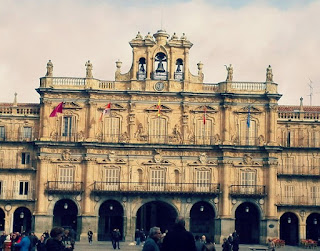BOATS IN THE MIDDLE AGES (Manuel Bona)

In most of the Middle Age, european knowledges of navegation were the Mediterranean sea, the North sea and the coastal areas of the Atlantic ocean. The techniques of navegation were few, the course was maintained by the release of shipped birds and the compass, but it didn´t exist until the 1200 approximately.
One of the most important acts was the use of the stern rudder, and the introduction of the lateen sail, which allowed boats sail upwind by successive embroidered.
To all of these must be added the compass and the improvement of maps like the “Carta de Pisana”in the XIII century.
There were different types of boats:
MOVED BY ROWING:
MOVED BY SAIL:
-The Carracas: This boats demaded more sail Surface. They had the need to carry to the ships more tonnage.
-The Naos: They were designed to sail long and difficult crossings, almost always were used in the Atlantic ocean. The caravelsand the naos had a combination of square sails (of Eastern origin) and triangular sail which allowed sail upwind, one long helm and one curved and tall keel, which provided more security and strength to the boat.
http://cdn01.am.infobae.com/adjuntos/163/imagenes/011/004/0011004590.jpg?0000-00-00-00-00-00
-The Caravels: It´s origin was Portuguese. It was long and narrow. It was perfeccionated by the Portuguese´s navegation school, it was founded in Sagres by Enrique el Navegante. Cristobal Colón dicovered America with three caravels (La Pinta, La Niña and La Santa María).
http://balearidesdigital.com/bdvs01/wordpress/wp-content/uploads/2014/01/Coca-de-Matar%C3%B3-1450-Balearides.jpg
-The Cokes: It´s origin was Atlantic it is known by the high forecastles, so sometimes they could have more tan one covers.
GOODS
Among the goods that were transported they can be classified into two groups:the herbs and the spices, the first group were the ones which modify the taste and the aspect of food,an in the second group, the ones which excited the palate. The spices as pepper, cinnamon, sffon and nutmeg came again to Europe.
THE HARBOURS
In the Middle Age the harbours were refered more as a place than as a material reality because of the absence of infrastructures was normal in most of the cities. The ships floted near the beach or in important harbours while the bigger
ships flotedfurther from the beach, so the goods were transported by small boats to the shore.
THE TRIPULATION OF THE BOATS
The patterns had broader functions than the simple techniques because they were the boss of the administration.
The notaries kept a book where all the incomes and expenses were reflected.
They controlled the loading and unloading of the goods, they bought what was necessary for the ship.
The tripulation was divided into two groups: the first group was formed by the sailors. The second group was formed by specialised personal.
ORIENTATION
The sailors orientated by stars because it was easier, although they also orientated by the sun, but it was more difficult because it´s tagging when it goes and when it puts is the same all year.


















